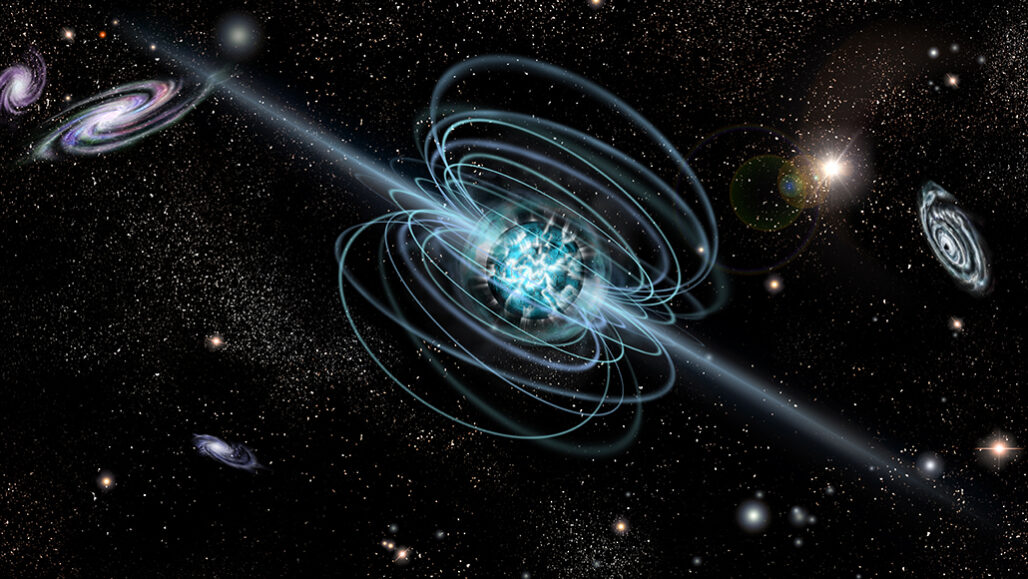Neutrinos could reveal how fast radio bursts are launched

For over a decade, astronomers have puzzled over the origins of fast radio bursts, brief blasts of radio waves that come mostly from distant galaxies. During that same period, scientists have also detected high-energy neutrinos, ghostly particles from outside the Milky Way whose origins are also unknown.
A new theory suggests that the two enigmatic signals could come from a single cosmic source: highly active and magnetized neutron stars called magnetars. If true, that could fill in the details of how fast radio bursts, or FRBs, occur. However, finding the “smoking gun” — catching a simultaneous neutrino and radio burst from the same magnetar — will be challenging because such neutrinos would be rare and hard to find, says astrophysicist Brian Metzger of Columbia University. He and his colleagues described the idea in a study posted September 1 at arXiv.org.
Even so, “this paper gives a possible link between what I think are two of the most exciting mysteries in astrophysics,” says astrophysicist Justin Vandenbroucke of the University of Wisconsin–Madison, who hunts for neutrinos but was not involved in the new work.
More than 100 fast radio bursts have been detected, but most are too far away for astronomers to see what drives the blasts of energy. Dozens of possible explanations have been debated, from stellar collisions to supermassive black holes to rotating stellar corpses called pulsars to pulsars orbiting black holes (SN: 1/10/18). Some astronomers have even invoked signals from aliens.